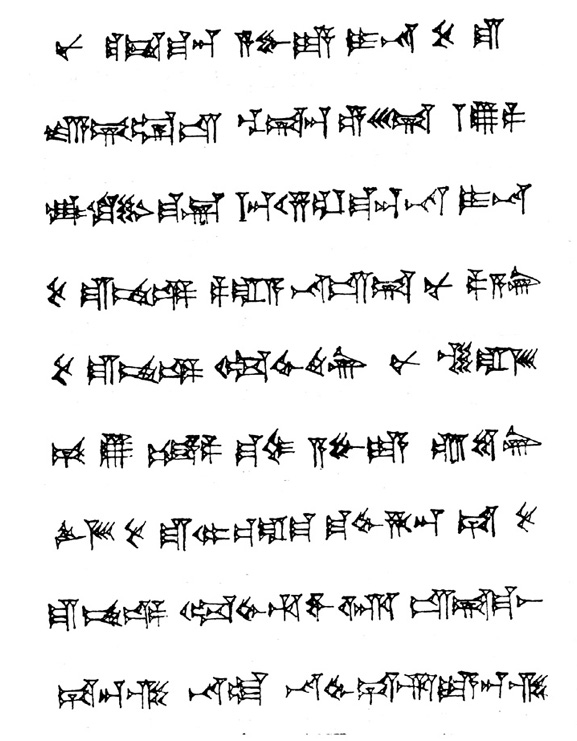Hittite is an important language for several reasons: it represents the extreme south-western outpost in the spread of indo-european culture; it represents a stage in the development of phonology which is otherwise unattested in indo-germanic languages; and it gives us insights into an important ancient civilization.
Hittite is attested mainly by cuneiform writing on clay tablets. Cuneiform writing consists of two strokes, a long and a short, which are combined in many different ways to form hundreds of cuneiform characters. Each character on a Hittite tablet can, in turn, represent a phoneme (like a letter in our alphabet), or a syllablic particle (like a letter in an Arabic alphabet), or a concept (like a character in Chinese pictograph or ideogram). Because the eras in Hittite history which are represented in the surviving tablets are eras rich in international contact, these tablets also contain examples of these same characters used to communicate loan-words from surrounding cultures (e.g., Sumerian); again, when these characters are used to communicate a loan-word, they may either be phonemic, syllabic, or pictographic/ideographic. Hence a single character represents numerous interpretive possibilities (e.g., it could be a Sumerian syllabic or a Hittite phomenic or an Akkadian ideograph/pictograph).
For further information:
A large Hittite web site, including many different individual pages, is operated by the American Schools of Oriental Research:

Return to the Languages and Linguistics Page